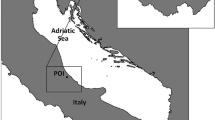Abstract
According to the investigations on the oil and gas pipelines such as the Lan-Cheng-Chong pipeline and the Southwest pipeline, there are two ways of laying pipeline: pipelines paralleling (approximately) to the main slide direction and pipelines perpendicular (approximately) to the main slide direction. If earth-retaining walls have been built for pipelines paralleling to the main slide direction, they will prevent the lands from sliding: On the contrary, without earth-retaining walls, the sharp broken rocks in the backfilling soil will scratch the safeguard of the pipeline when the landslides take place. Pipelines perpendicular to the main slide direction can be classified into four types according to the relative positions between pipelines and landslides: Pipelines over the slide planes, pipelines inside the fracture strips of slide planes, pipelines below the slide planes and pipelines behind the backsides of landslides. The different dynamical mechanisms of the process in which landslide acts against pipelines are analyzed based on whether the pipelines are equipped with fixed frusta, because the sliding resistance depends on whether and how many fixed frusta are equipped and the distance between frusta.
Similar content being viewed by others
References
Wang Gongli, Wang Li. Development Status and Prospective Trend of Pipeline Technology at Home and Abroad [J].Petroleum planning and engineering, 2004,15(4):1–7(Ch).
Ding Jianlin. China's Oil and Gas Pipeline Technology and Its Development Current [J].Oil & Gas Storage and Transportation, 2003,22(9):22–25 (Ch).
Zhu Xilong. Discussion on the development of Oil and Gas Pipelines in Pur Country [J].Refining and Chemicals, 2005,16(2):4–9 (Ch).
Çevik E, Topal T. GIS-Based Landslide Susceptibility Mapping for a Problematic Segment of the Natural Gas Pipeline, Hendek (Turkey) [J].Environmental Geology, 2003,44 (8):949–962.
Leynes R D, Pioquinto W P C, Caranto J A. Landslide Hazard Assessment and Mitigation Measures in Philippine Geothermal Fields [J].Geothermics, 2005,34(2):205–217.
Liu Yang, Wu Kexin. Discusses on Water Conservancy Protection Measure of Oil and Gas Pipelines in Loess Areas [J].Natural Gas and Oil, 2003,21(4):58–62 (Ch).
Wang Huyi:Research on Failures of Pipeline under Geological Disasters [D]. Xi'an: The Northwestern Polytechnic University, 2003:5–20 (Ch).
Ren Weizhong, Chen Hao. Model Testing Research on Deformation and Fracture Mechanism of Landslide and Its Harness Engineering [J].Chinese Journal of Rock Mechanics and Engineering, 2005,24(12):2136–2141 (Ch).
Challamel N, Debuhan P. Mixed Modelling Applied to Soil-Pipe Interaction [J].Computers and Geotechnics, 2003,30 (3):205–216.
Luo Fuxu. The Application of Ultra-High-Strength Pipelines in Pipeline Construction [J].Oil & Gas Storage and Transportation, 2003,22(1):59 (Ch).
Zhang Dongchen. The Force Summing Analysis of Buried Pipeline under Landslide Condition [J].Petroleum Planning & Engineering, 2001,12(6):1–3 (Ch).
Zhang Qingyuan. Comparisons of the Internal Forces and Deflections of Aerial Crossing Pipelines with and without Anchor Blocks [J].Oil & Gas Storage and Transportation, 1999,18(6):7–20 (Ch).
Author information
Authors and Affiliations
Additional information
Foundation item: Supported by the Transportation Construction Science and Technology Project of Communication Ministry (2003-318-802-01)
Biography: MA Qingwen (1978-), male, Ph.D. candidate, research direction: mountain hazards mitigation and engineering control.
Rights and permissions
About this article
Cite this article
Qingwen, M., Chenghua, W. & Jiming, K. Dynamical mechanisms of effects of landslides on long distance oil and gas pipelines. Wuhan Univ. J. Nat. Sci. 11, 820–824 (2006). https://doi.org/10.1007/BF02830170
Received:
Issue Date:
DOI: https://doi.org/10.1007/BF02830170




